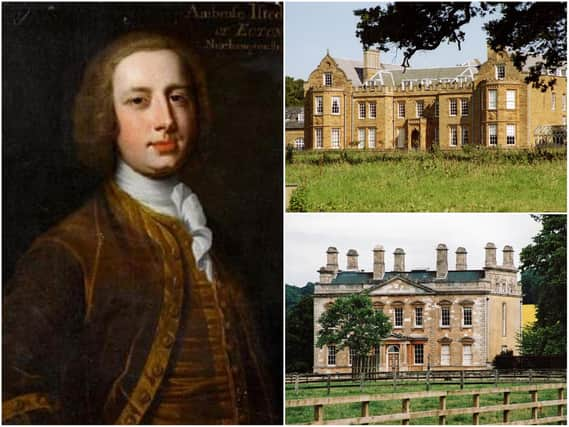Historic England 'audit' into villages with ties to slave trade includes two Northamptonshire landmarks


Two Northamptonshire country estates have been named in an audit by Historic England into the ties between small village landmarks and slavery.
The public body tasked with preserving buildings and monuments has compiled the list of sites linked to the transatlantic slave trade and the people who profited from it.
Advertisement
Hide AdAdvertisement
Hide AdNow, the 165-page report has named halls, farms, schools, pubs and parish churches across England it says played a role in the transatlantic slave economy.


As part of this, the inquiry has named two locations in Northamptonshire it says benefited from wealth made through the exploitation of slaves - Ecton Hall, in Ecton, and Astrop House, near Banbury.
The report details how Ecton Hall, east of Earls Barton, was renovated significantly in 1756 for owner Ambrose Isted, which would have likely been paid for through wealth made by the Isted family's sugar and rum plantation in Jamaica.
Meanwhile, Astrop House, Kings Sutton, was built around 1740 for Sir John Willes, who jointly held and profited from a plantation in Antigua.
Advertisement
Hide AdAdvertisement
Hide AdThe report reads: "The history of transatlantic slavery is indivisible from the history of England.


"Recent events associated with the Black Lives Matter movement (June 2020) serve as a potent reminder of how this history of exploiting human life for profit permeates many aspects of English history
"The discussion about how as a nation England memorialises its slaving past is more pertinent than ever."
The report was completed last summer, shortly after the toppling of a statue of slave trader Edward Colston in Bristol by activists from the Black Lives Matter movement.
Advertisement
Hide AdAdvertisement
Hide AdColston derived much of his wealth from the profits of sugar plantations exploitation of African slavery, and left much of his fortune to Bristol institutes after he died.
The toppling of the statue sparked conversation about how modern society should treat historic public figures who had ties to the slave trade.
A statement from Historic England about the paper reads: “In early 2020, we commissioned an audit which brings together previous research into the tangible traces of the transatlantic slave trade in England’s built environment, mostly carried out over the last thirty years by universities and community groups
"The audit has also identified gaps in knowledge and makes suggestions for future research. This knowledge will absolutely not be used to delist structures, but it will be used to enhance the National Heritage List for England and tell a fuller story of England's rich and complex history.
Advertisement
Hide AdAdvertisement
Hide Ad"As a separate piece of work in November we published our Inclusion, Diversity and Equality Strategy following two years of development and consultation. It reaffirms our commitment to delivering our work in a way that benefits a broader range of people, places and communities which better represent the diversity of England and our rich heritage.
"Heritage is for everyone and we want our work to ensure that a diverse range of people are able to connect with, participate in and enjoy the historic environment.”